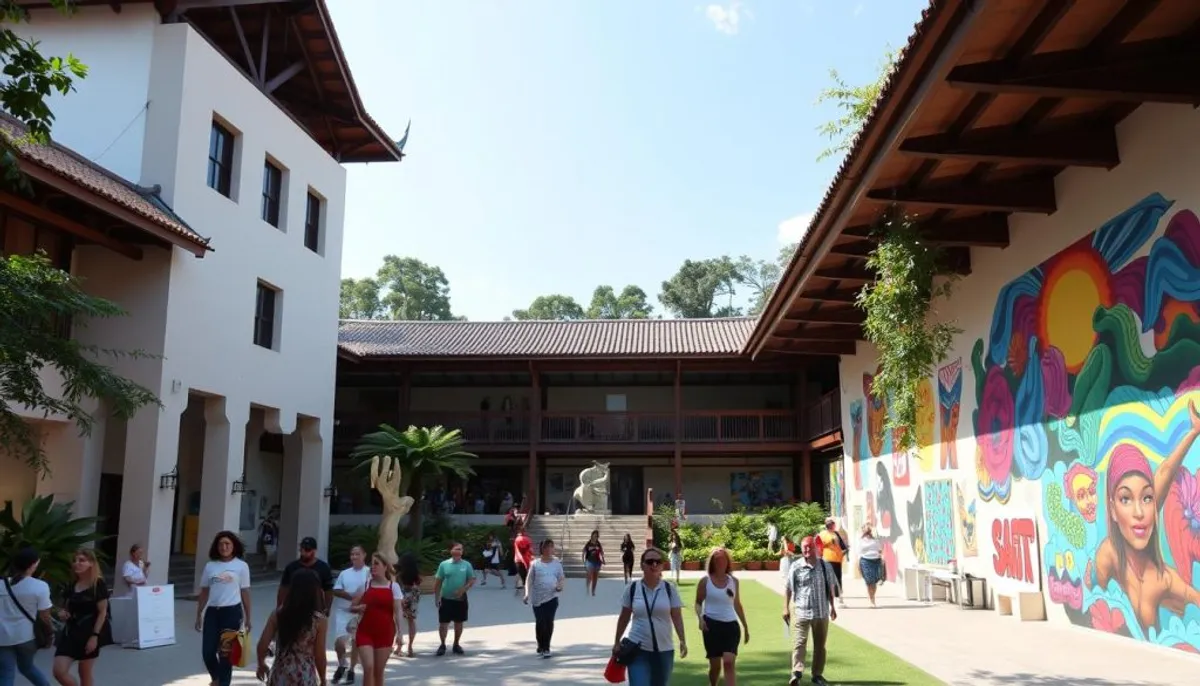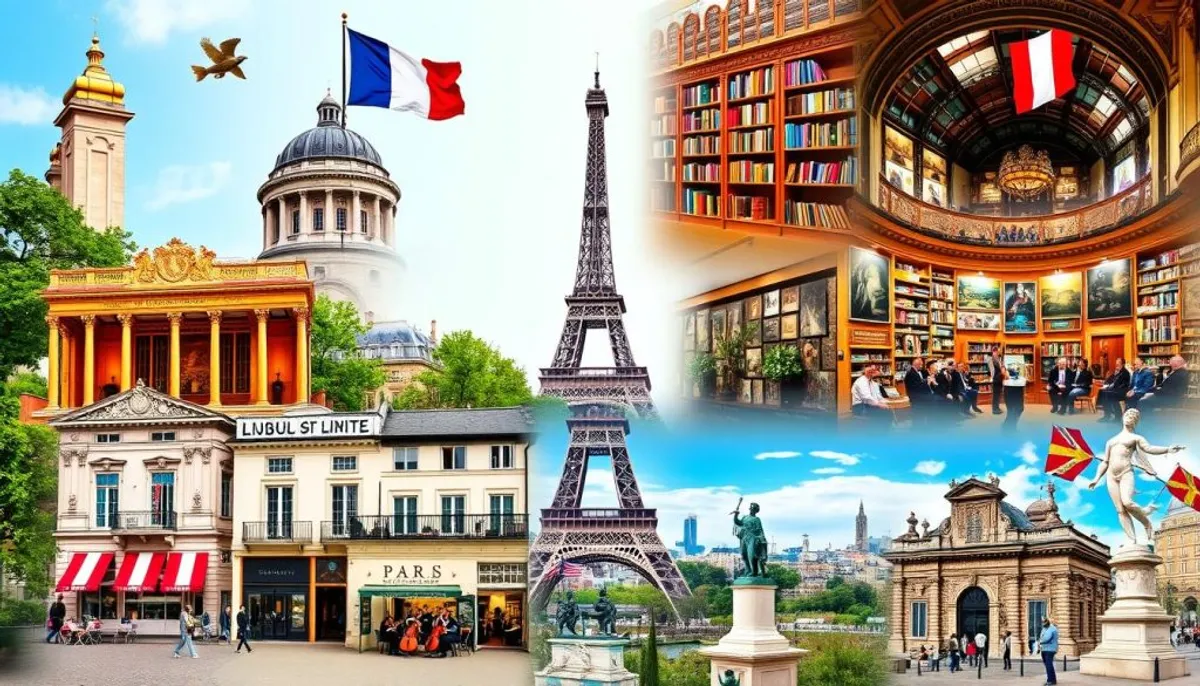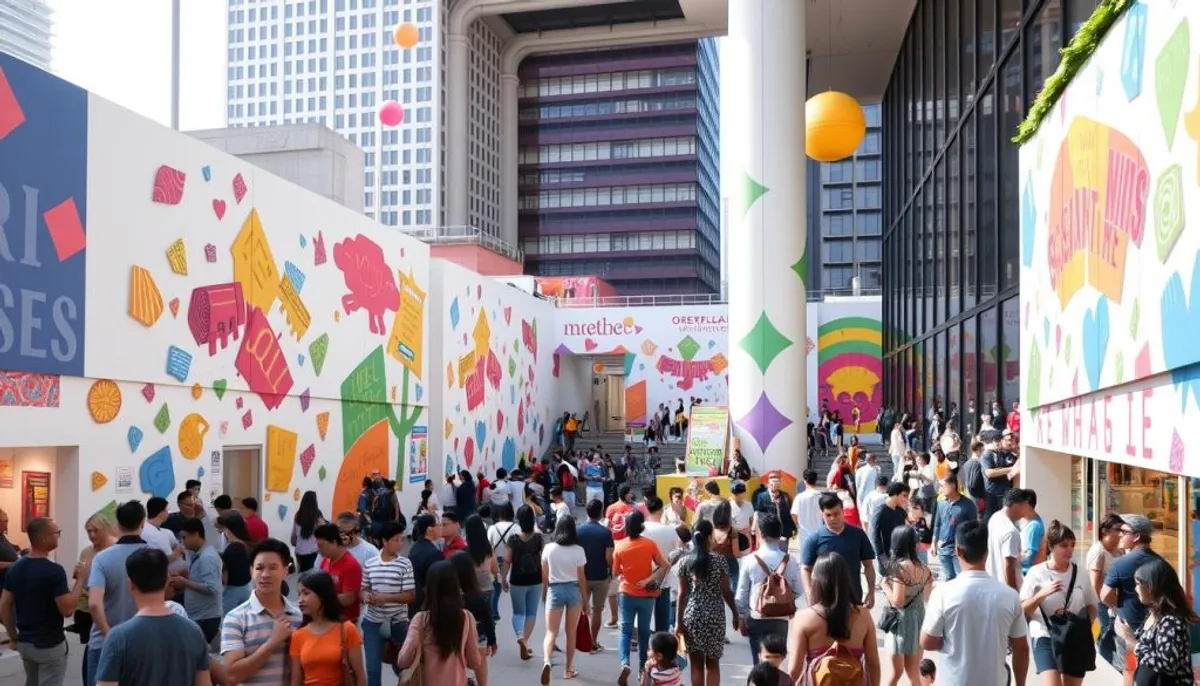A cultural place is a space dedicated to the artistic and social flourishing of a community. These cultural institutions play a crucial role in local life. They offer a variety of activities, from performances to exhibitions.
Cultural centers, whether municipal or regional, are at the heart of artistic life in many cities. In France, these cultural spaces are often managed by municipalities. They promote creation and sociocultural activities.

On an international scale, remarkable examples exist. The Centro Cultural Kirchner in Buenos Aires, for example, is the largest in Latin America. In Europe, Germany stands out with the Gasteig. Belgium has more than 110 cultural centers.
These cultural places are not limited to artistic dissemination. They increasingly integrate the social dimensions of the local context. They respond to a growing demand for diversity in cultural expressions.
What is a cultural place: definition and essential characteristics
A cultural place is an open space for everyone, dedicated to meeting, exchanging, and creating. It weaves connections between citizens and promotes artistic discovery. These spaces play a crucial role in exercising cultural rights, allowing everyone to actively participate in cultural life.
The fundamental elements of a cultural place
The functions of cultural spaces are varied and essential. They serve as platforms for knowledge transmission, promotion of artistic creation, and enhancement of local heritage. These places offer unique opportunities for cultural expression and learning.
The social and community role of cultural spaces
Cultural places significantly contribute to the attractiveness of territories, especially in rural areas. They often rely on an existing local associative fabric. The concept of cultural third places is evolving, with innovative formats emerging in small and medium-sized municipalities, particularly those labeled as Small Towns of Tomorrow.
The educational and artistic mission
The cultural mission of these spaces extends to artistic education and the promotion of creation. Local authorities play an important role in this area. They organize and fund initial education in music, dance, and dramatic arts. Additionally, they can support the creation of new cultural establishments.
| Type of cultural place | Main mission | Target audience |
|---|---|---|
| Municipal libraries | Access to reading and information | All residents |
| Museums | Conservation and exhibition of heritage | Residents and tourists |
| Performance halls | Artistic dissemination | Live art enthusiasts |
The different types of cultural places in France
France, with its rich heritage, presents an impressive variety of cultural places. These spaces are essential for the promotion and preservation of French culture. With more than 40,000 protected monuments and sites, one third of which are classified, France is a true cultural treasure.
Municipal cultural centers
The French cultural centers, managed by municipalities, are pillars of local cultural life. They offer a varied program, ranging from exhibitions to live performances. These places promote access to culture for all citizens, contributing to cultural democratization.

French institutes abroad
The cultural institutes of France abroad are ambassadors of French culture around the world. Managed by the Ministry of Foreign Affairs, they offer language courses, cultural events, and artistic exchanges. These institutes play a key role in promoting French culture internationally.
Houses of culture
A concept developed by André Malraux, houses of culture are meeting places between artists and the public. They offer a multidisciplinary program, blending theater, music, dance, and visual arts. These spaces embody the ideal of cultural democratization by making art accessible to all.
| Type of cultural place | Main characteristics | Management |
|---|---|---|
| Municipal cultural centers | Diverse programming, local anchoring | Municipalities |
| French institutes abroad | Promotion of the French language and culture | Ministry of Foreign Affairs |
| Houses of culture | Multidisciplinary programming, cultural democratization | Local authorities |
The fundamental missions of cultural spaces
The objectives of cultural places have evolved significantly. Since the international symposium of 1996, these spaces have adopted new missions. They now respond to contemporary challenges.
The promotion of artistic creation
The roles of cultural spaces extend beyond the conservation of heritage. They become incubators of creativity. They encourage artistic experimentation and openness to new audiences.
This mission is manifested by the transformation of industrial wastelands into creative spaces, notably cultural places in France. They combine history and innovation.
The enhancement of local heritage
The repurposing of former factories for cultural spaces is a significant trend. This approach preserves industrial heritage while creating unique places. Usine C in Montreal and the Écomusée du Fier Monde illustrate this enhancement.
Sociocultural animation
Cultural animation is essential in the missions of these spaces. The ECM program, initiated in 1998, created 150 multimedia cultural spaces in France. These places play a crucial role in accessing new technologies and culture for all.
| Type of structure | Number of ECM |
|---|---|
| Libraries and media libraries | 64 |
| Municipal cultural centers and MJC | 38 |
| Cinemas and audiovisual centers | 13 |
| Others (national scenes, art schools, etc.) | 35 |
These cultural spaces continuously adapt. They respond to the changing needs of society. They become essential pillars of cultural and social life.
The role of cultural places in modern society

In our contemporary society, cultural places play an indispensable role. They strengthen the social bond and promote collective flourishing. These spaces allow artists and audiences to meet, thereby fostering exchange and creativity.
Their social impact is palpable through various initiatives. The network of Scènes des Musiques Actuelles (SMAC), for example, responds to artistic needs. It offers rehearsal spaces and professional dissemination. These places become catalysts for culture, encouraging artistic expression and the sharing of ideas.
The Freiburg Declaration (2007) highlights the importance of cultural rights. It includes the freedom of artistic expression and equitable access to cultural life. Cultural places are essential for the realization of these rights. They offer spaces where everyone can participate and flourish culturally.
Artists' workshops in popular neighborhoods illustrate the social bond created by cultural spaces. These innovative initiatives bring creation and cultural transmission closer together. They strengthen the social and cultural fabric of our communities.
In conclusion, cultural places are crucial for our "living together." They offer unique opportunities for meeting, learning, and sharing. They contribute to a more cohesive and dynamic society.
Accessibility and cultural democratization
Cultural democratization represents a crucial challenge for cultural institutions in France. Despite progress, access to culture remains unequal, influenced by social categories.
Initiatives to reach all audiences
Cultural spaces strive to diversify their audience. The Aix-en-Provence opera festival, for example, targets young adults via TikTok. Digital technology offers unprecedented opportunities for cultural inclusion, particularly among younger generations.
Pricing policy and social inclusion
Free access is a powerful lever for making culture accessible. In Benin, a contemporary art museum has experienced remarkable success due to free entry and free transportation. In France, initiatives offer reduced rates for disadvantaged audiences.
Cultural mediation programs
Cultural mediation is crucial for democratizing access to culture. Cultural establishments are intensifying their outreach efforts to reach new audiences. Artistic education in schools is essential but often underfunded.
| Cultural practice | Percentage of the population |
|---|---|
| Daily music listening | 57% |
| Going to the cinema at least once a year | 63% |
| Visiting a museum or exhibition | 30% |
| Classical music concert | 6% |
These statistics highlight the persistent challenges of cultural inclusion in France. Cultural institutions must continue to innovate to ensure real access to culture for all.
The management and organization of cultural spaces
Cultural management represents an exciting challenge, requiring a comprehensive vision. The organization of cultural places is based on three fundamental pillars: administrative functioning, cultural programming, and institutional partnerships.
Administrative functioning
The management of a cultural space requires meticulous administration. Teams must navigate between financial management, human resources, and logistics. For example, 95% of cultural places aim to address all audiences, requiring detailed resource planning.
Cultural programming
Programming is the heart of any cultural place. It must be varied to attract diverse audiences. Statistics reveal that cultural spaces often offer free events to encourage participation from all. This inclusive strategy is essential for democratizing culture.
Institutional partnerships
Cultural partnerships are crucial for the development of cultural spaces. They allow for resource sharing and expanding the cultural offer. For example, many cultural places collaborate with schools to provide educational programs, thus enriching the communities intellectually.
RelatedRelated articles


